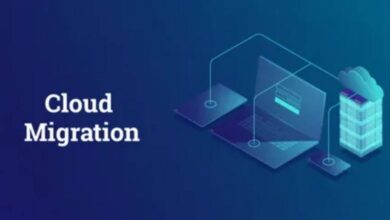Blog
10 Must-Have Features to Look For in Procure-to-Pay Software

For many finance and procurement leaders, procure-to-pay (P2P) software has become more than just a back-office tool, it’s now a cornerstone of operational efficiency.
From managing supplier relationships to streamlining invoice approvals, the right P2P system can save countless hours and reduce costly errors
But with so many platforms on the market, making a decision can feel overwhelming.
Choosing software isn’t just about ticking boxes; it’s about aligning technology with your company’s goals, workflows, and future growth. That’s why it’s critical to know what features truly matter before you commit.
In this article, we’ll break down ten must-have capabilities that will help you choose the right P2P software with confidence.
The Role of Procure-to-Pay Software
At its core, procure-to-pay (P2P) software bridges the gap between purchasing and accounts payable. It manages the entire cycle, from requisitioning goods and services, to approving purchases, receiving deliveries, and finally paying suppliers. By centralizing these processes, P2P software eliminates manual bottlenecks and creates a single source of truth for finance and procurement teams. With the right system, organizations gain better visibility into spend, improve compliance with internal policies and external regulations, and strengthen relationships with suppliers. For growing businesses, these benefits translate into stronger cash flow management and fewer risks associated with fraud or errors. But here’s the challenge: not all platforms are created equal. While most tools promise automation, only some provide the flexibility, integrations, and security that companies truly need. That’s why understanding the essential features is critical before making a choice.10 Must-Have Features of Procure-to-Pay Software
1. Seamless Integration with ERP & Accounting Systems
Your P2P software should connect smoothly with your existing ERP or accounting platform. Without integration, data silos emerge, leading to duplicate work, delayed reconciliations, and costly mistakes. A well-integrated solution ensures purchase orders, invoices, and payments flow automatically into your financial systems, giving your team real-time accuracy.2. Automated Invoice Processing & Matching
Manual invoice handling is one of the biggest time sinks in accounts payable. Look for a tool that automates invoice capture, three-way matching (invoice, PO, and receipt), and exception handling. This reduces processing times, improves accuracy, and frees up your staff to focus on more strategic tasks instead of chasing errors.3. Smart Approval Workflows
Approvals shouldn’t become a bottleneck. A strong P2P platform provides configurable workflows that route requests to the right people automatically, with clear visibility at each stage. Bonus points if the system offers automated reminders or escalations to keep things moving. Faster approvals mean suppliers get paid on time and business operations stay on track.4. Supplier Self-Service Portal
Strong supplier relationships rely on transparency. A P2P system with a self-service portal allows vendors to submit invoices, track payment status, and update their information without flooding your AP inbox. This not only reduces back-and-forth communication but also improves supplier satisfaction by giving them visibility and control.5. Real-Time Spend Visibility & Analytics
Having accurate, up-to-date data is essential for managing budgets and forecasting. Look for P2P software that provides real-time dashboards and customizable reports. With clear visibility into spend by department, vendor, or category, finance leaders can spot trends, identify savings opportunities, and make better decisions backed by data.6. Compliance & Risk Management Tools
Regulatory compliance and fraud prevention are top priorities for finance teams. The right P2P platform should include built-in controls, such as audit trails, policy enforcement, and vendor risk scoring to minimize exposure. By ensuring every transaction is traceable and policy-compliant, you reduce both operational and legal risks.7. Mobile Accessibility & Cloud Deployment
Today’s workforce isn’t tied to a desk. A cloud-based P2P platform with mobile functionality allows managers to approve purchases, review invoices, and monitor spend anytime, anywhere. This flexibility accelerates workflows and supports remote or hybrid teams without compromising security.8. Scalability for Business Growth
As your company grows, so will the volume of transactions and supplier relationships. The P2P system you choose should scale effortlessly, whether you’re expanding into new markets or handling more complex procurement needs. Scalable solutions protect you from costly upgrades or platform changes down the road.9. User-Friendly Interface & Onboarding Support
Even the most powerful software won’t deliver value if your team struggles to use it. Prioritize platforms with intuitive dashboards, simple navigation, and role-based access. In addition, strong vendor onboarding and training resources ensure your staff can adopt the system quickly and confidently.10. Robust Security & Data Protection
Financial data is highly sensitive, making security non-negotiable. Your P2P software should include features like multi-factor authentication, role-based permissions, and advanced encryption. Strong compliance certifications (such as SOC 2 or ISO 27001) also provide assurance that your data is protected against cyber threats.How to Evaluate Vendors
While features are critical, they’re only part of the decision. The vendor behind the software plays an equally important role in your long-term success. A platform might check every box on paper, but without strong implementation support and reliable customer service, the rollout can fall flat. When evaluating vendors, consider their track record with businesses like yours. Ask for:- Case studies, customer references, or industry-specific examples to see how they’ve handled similar challenges.
- Make the most of demos and free trials by testing real workflows your team will use daily.
- Weigh the total cost of ownership. Implementation, training, and ongoing support, not just the license fee.



